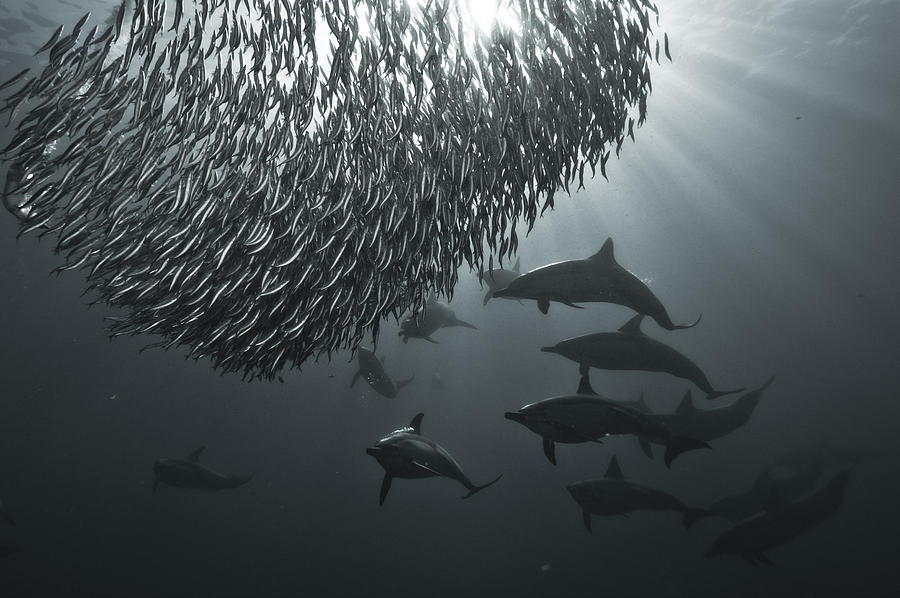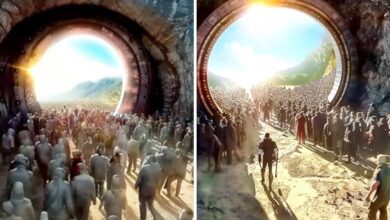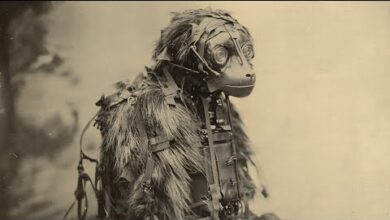The Dark Side of the Ocean

The open ocean is a vast and powerful environment, home to some of the largest creatures on Earth. Although it appears lifeless during the day, at night it undergoes a dramatic transformation as billions of animals rise from the depths in the largest migration on the planet. These creatures avoid daylight predators by ascending under the cover of darkness and returning to the deep at dawn. Marine biologist and experienced underwater cameraman Rick Rosenthal, after 30 years of filming ocean wildlife, is determined to capture this elusive vertical migration on film.
Rick embarks on his journey in the tropical Pacific aboard the MV Coco with veteran captain Dennis Bishop. During the day, Rick relies on subtle ocean signs, such as birds swooping over the water and dolphins surfacing, to find areas rich with marine life. These areas offer the best chance of witnessing the nighttime migration. Spotting a smooth patch on the water’s surface suggests that whales recently passed through, and soon Rick encounters pilot whales feeding on deep-sea squid. The whales’ presence hints that the area might be ideal for the migration later that night.
While observing the whales, Rick notices an oceanic whitetip shark trailing them. The shark attempts to provoke the whales into defecating, revealing their recent squid meal. This interaction highlights the shark’s opportunistic nature, scavenging food from the whales instead of hunting on its own. As the whales dive to depths beyond 600 meters, Rick knows he must wait until nightfall for other predators to appear.

During the search, Rick and Dennis find a floating log—a key sign of life in the open ocean. Logs act like mobile reefs, attracting fish and creating small ecosystems. As Rick approaches the log, dolphins and yellowfin tuna are already feeding on schools of anchovies. A frenzy unfolds as these predators chase fish from the safety of the log into open water, where blacktip sharks and sailfish join the hunt. The predators work together, with the dolphins herding fish and the sailfish using their large fins to corner prey before lunging through bait balls to feed.
As evening approaches, Rick notices that the surface begins to clear as most animals dive deeper, awaiting the vertical migration. Using a depth sounder, Rick identifies a massive, dense layer of animals rising from the depths, covering an area the size of a city. This biomass is made up of countless deep-sea creatures ascending to the surface to feed on plankton under the safety of night.
In the dim light, Rick spots a baby leatherback turtle feeding on small gelatinous creatures—an early sign of the migration beginning. Soon after, salps and other deep-sea animals start arriving. Rick knows the most challenging part of his mission is about to begin: filming the migration in complete darkness, surrounded by predators and the unpredictable mysteries of the open ocean.
Rick takes a night dive to explore vertical migration of marine life, but the first take is unsuccessful due to the bright moonlight. In these conditions, deep-sea creatures do not rise to the surface as expected because the light makes them easy to spot for predators. After seeking answers from scientists at the Monterey Oceanographic Research Institute (MBARI), Rick learns that the creatures’ migration is driven by light – they only rise when the light is low, often on moonless nights.
On a subsequent dive on a completely dark night, Rick and his partner Dennis return to the area where they discovered a cluster of deep-sea creatures. This time, the creatures begin to appear in waves: squid and lanternfish with glowing spots on their bodies, shrimp and crab larvae swimming near the surface. The squid squirt ink to distract predatory dolphins, but the dolphins use sonar to easily chase them.
Rick also encountered rare species such as siphonophore jellyfish with glowing tentacles and pyrosomes – bioluminescent tube-shaped creatures that sometimes shelter small shrimp. A special moment for Rick was when he encountered a 5cm-long juvenile Spearfish – a relative of the sailfish that is rarely seen during the day. If it survives, it will grow to over 2 metres long as an adult.
As night turned to dawn, the creatures began to sink back to the seabed. Larger creatures such as manta rays and dolphins gradually left after feeding. Rick felt that the ocean was empty, but he knew that this migration phenomenon still occurs every night in all the world’s oceans – if only the right place and time were available, explorers would always find wonders in the darkness of the deep.
The journey ends with the stillness of dawn, but Rick understands that this magical migration will continue every night – a never-ending cycle of life between darkness and light.








